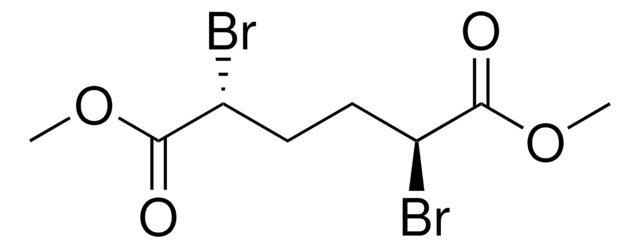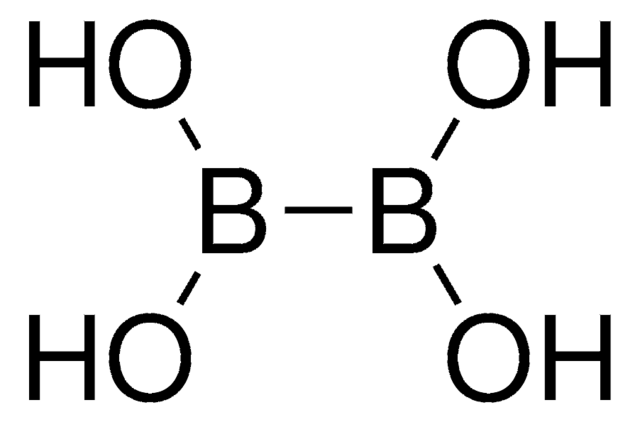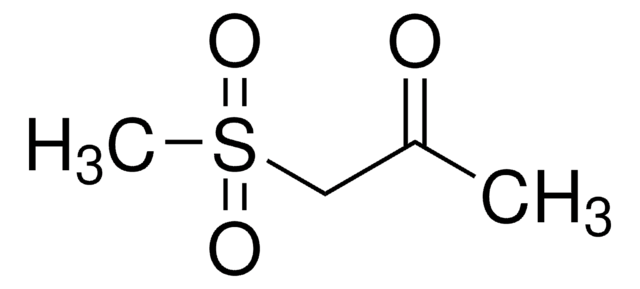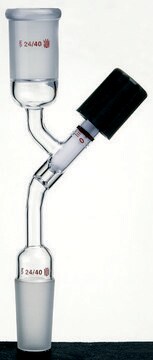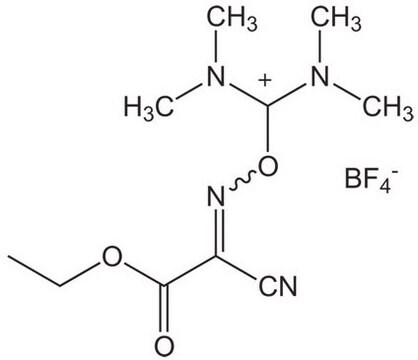Wszystkie zdjęcia(2)
Kluczowe dokumenty
900607
2,5-Dibromohexanediamide
≥95%
Synonim(y):
2,5-dibromoadipamid, DBHDA
Zaloguj sięWyświetlanie cen organizacyjnych i kontraktowych
About This Item
Wzór empiryczny (zapis Hilla):
C6H10Br2N2O2
Numer CAS:
Masa cząsteczkowa:
301.96
Numer MDL:
Kod UNSPSC:
12352200
NACRES:
NA.22
Polecane produkty
Poziom jakości
Próba
≥95%
Formularz
solid
temp. przechowywania
2-8°C
ciąg SMILES
BrC(CCC(Br)C(=O)N)C(=O)N
InChI
1S/C6H10Br2N2O2/c7-3(5(9)11)1-2-4(8)6(10)12/h3-4H,1-2H2,(H2,9,11)(H2,10,12)
Klucz InChI
PLSXNAQEJOGNKQ-UHFFFAOYSA-N
Zastosowanie
Wykazano, że związek ten jest użytecznym odczynnikiem do konwersji cysteiny do dehydroalaniny (DHA) w peptydach lub białkach. Umożliwia to mutagenezę chemiczną, w której DHA można skutecznie reagować z blokami budulcowymi jodków w celu dodania różnych naturalnych i nienaturalnych łańcuchów bocznych do białek. Wykazano również, że za pomocą DHA można dodawać inne modyfikacje, takie jak fosforylacja, metylacja i glikozylacja. W innych badaniach wykazano, że DHA może być stosowany do wytwarzania koniugatów ubikwityny, które mają wiązanie naśladujące natywne wiązanie izopeptydowe.
Ta strona może zawierać tekst przetłumaczony maszynowo.
Hasło ostrzegawcze
Warning
Zwroty wskazujące rodzaj zagrożenia
Zwroty wskazujące środki ostrożności
Klasyfikacja zagrożeń
Eye Irrit. 2 - Skin Irrit. 2
Kod klasy składowania
11 - Combustible Solids
Klasa zagrożenia wodnego (WGK)
WGK 3
Temperatura zapłonu (°F)
Not applicable
Temperatura zapłonu (°C)
Not applicable
Wybierz jedną z najnowszych wersji:
Certyfikaty analizy (CoA)
Lot/Batch Number
Nie widzisz odpowiedniej wersji?
Jeśli potrzebujesz konkretnej wersji, możesz wyszukać konkretny certyfikat według numeru partii lub serii.
Masz już ten produkt?
Dokumenty związane z niedawno zakupionymi produktami zostały zamieszczone w Bibliotece dokumentów.
Posttranslational mutagenesis: A chemical strategy for exploring protein side-chain diversity.
Wright TH, et al.
Science, 4(354), 6312-6312 (2016)
Methods for converting cysteine to dehydroalanine on peptides and proteins.
Chalker JM, et al.
Chemical Science, 2, 1666-1676 (2011)
Protein ubiquitination via dehydroalanine: development and insights into the diastereoselective 1,4-addition step.
Meledin R, et al.
Organic & Biomolecular Chemistry, 14(21), 4817-4823 (2016)
Philip R Lindstedt et al.
Cell chemical biology, 28(1), 70-77 (2020-11-21)
Great advances have been made over the last four decades in therapeutic and diagnostic applications of antibodies. The activity maturation of antibody candidates, however, remains a significant challenge. To address this problem, we present a method that enables the systematic
Nasz zespół naukowców ma doświadczenie we wszystkich obszarach badań, w tym w naukach przyrodniczych, materiałoznawstwie, syntezie chemicznej, chromatografii, analityce i wielu innych dziedzinach.
Skontaktuj się z zespołem ds. pomocy technicznej